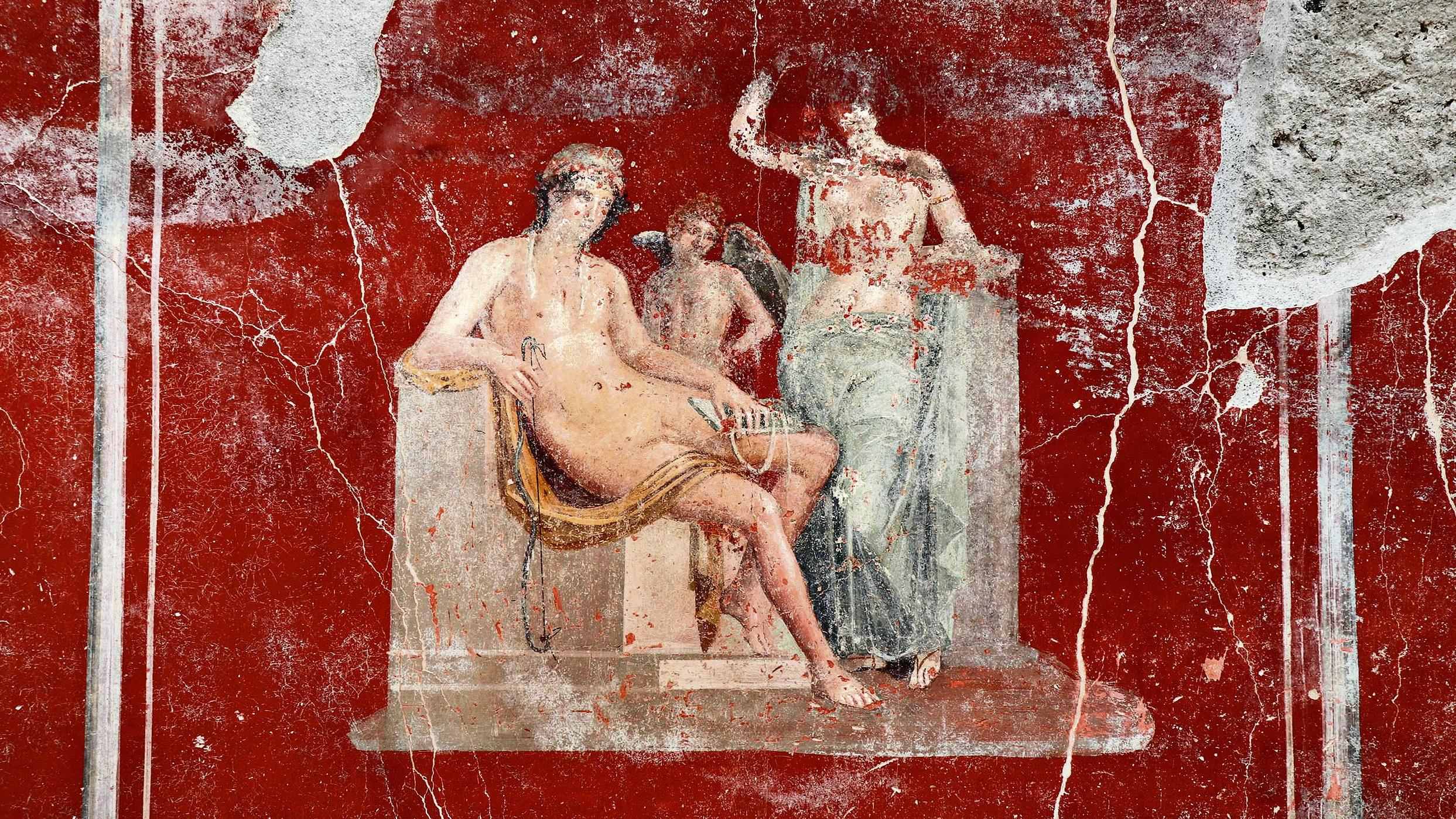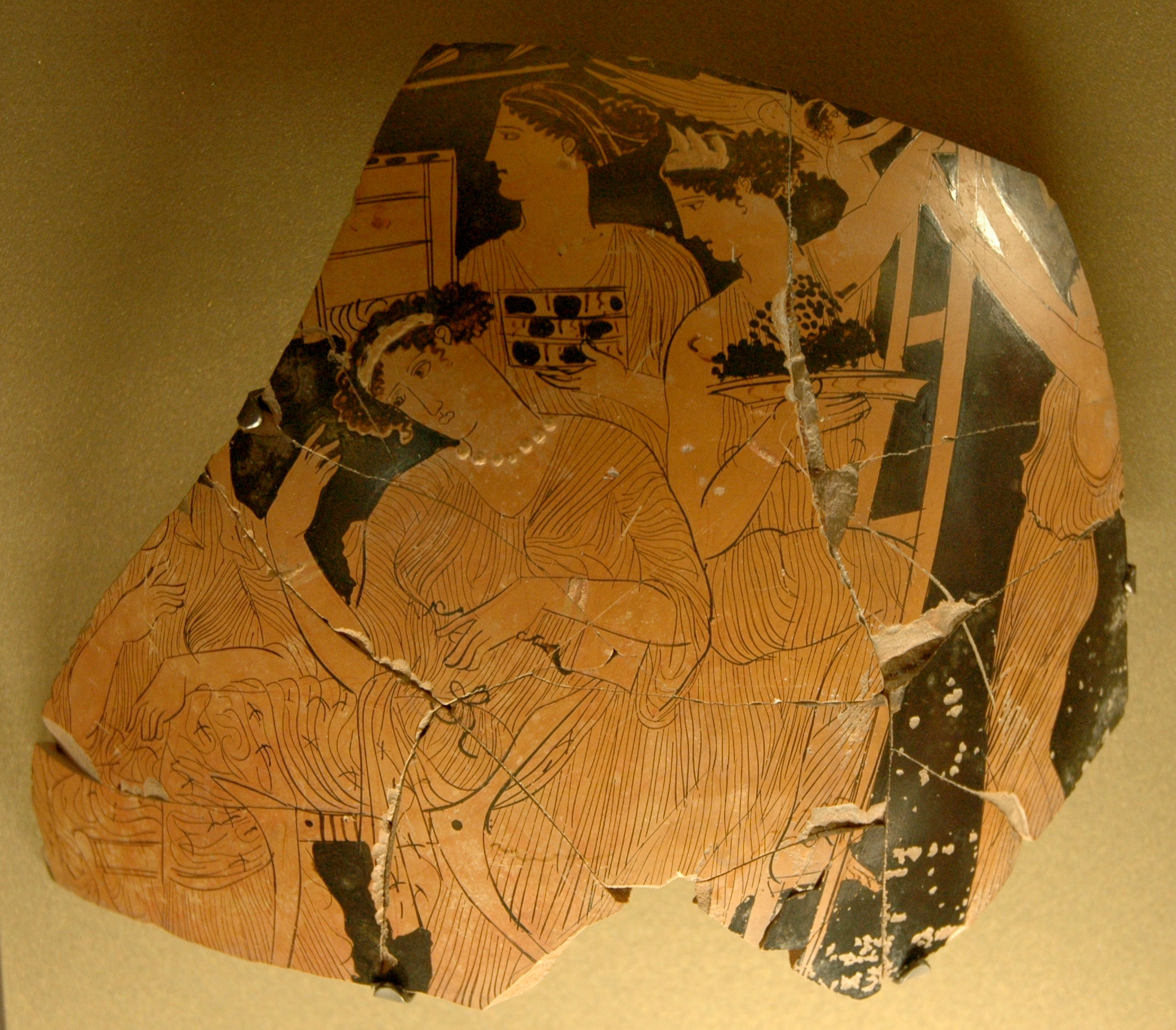|
Adonis (plant)
''Adonis'' is a genus of about 20–30 species of flowering plants of the crowfoot family, Ranunculaceae, native to Europe and Asia. The species grow to in height, with feathery, finely divided leaves. Their flowers are red, yellow or orange and have 5–30 petals. The Autumn Adonis, pheasant's-eye (''A. annua''), has flowers with bright red petals. The generic name ''Adonis'' refers to the mythical character Adonis, a lover of the goddess Aphrodite or Venus, and of Persephone, goddess of the underworld. Red flowers of the Adonis genus are said to have grown from the grave of Adonis, after he was slain by a wild boar possessed with unusual viciousness through instigation by the jealous Ares. According to the ''Metamorphoses'' of OvidOvid ''Metamorphoses'' X 519-741 the anemone, also of the family ''Ranunculaceae'', was created when Venus sprinkled nectar on his blood. Selected species *'' Adonis aestivalis'' - summer pheasant's-eye *'' Adonis aleppica'' *''Adonis amurensis'' ... [...More Info...] [...Related Items...] OR: [Wikipedia] [Google] [Baidu] |
Adonis Vernalis
''Adonis vernalis'', known variously as pheasant's eye, spring pheasant's eye, yellow pheasant's eye and false hellebore, is a perennial flowering plant in the buttercup family Ranunculaceae. It is found in dry meadows and steppes in Eurasia. More specifically, this plant grows in a wide range of locations which include open forests, forest clearings, dry meadows, mesic steppe, and mostly calcareous soil. Isolated populations are found from Spain in the west across Central Europe with fine examples in Valais, Switzerland, and southern Europe, reaching southern Sweden in the north and Abruzzo in the south, with its main area of distribution being the Pannonian Basin and the West Siberian Plain. In contrast to most other European ''Adonis'' species, the flowers appear in springtime, and are up to in diameter, with up to 20 bright yellow petals. Not only do the flowers begin to grow, but so do the plants aerial organs, from around April to May. The plant is poisonous, containing ca ... [...More Info...] [...Related Items...] OR: [Wikipedia] [Google] [Baidu] |
Adonis Aestivalis
''Adonis aestivalis'', the summer pheasant's-eye, is a medicinal and ornamental plant. It is native to Europe and Asia but has been introduced elsewhere, such as the western and eastern parts of the United States, as an ornamental plant. In particular, it has been known to invade alfalfa fields, contaminating feed used for horse hay. It is a member of the buttercup family. It is an annual herb. Etymology The genus name, ''Adonis'', comes from a tale in Greek mythology. Aphrodite is said to have turned her lover, Adonis, into a plant with red flowers after his death. The specific epithet, ''aestivalis'', is derived from Latin Latin (, or , ) is a classical language belonging to the Italic branch of the Indo-European languages. Latin was originally a dialect spoken in the lower Tiber area (then known as Latium) around present-day Rome, but through the power of the ... and means "pertaining to the summer". Description It is an annual herb that grows up to 0.1m (roughly ... [...More Info...] [...Related Items...] OR: [Wikipedia] [Google] [Baidu] |
Adonis Nepalensis
In Greek mythology, Adonis, ; derived from the Canaanite word ''ʼadōn'', meaning "lord". R. S. P. Beekes, ''Etymological Dictionary of Greek'', Brill, 2009, p. 23. was the mortal lover of the goddess Aphrodite. One day, Adonis was gored by a wild boar during a hunting trip and died in Aphrodite's arms as she wept. His blood mingled with her tears and became the anemone flower. Aphrodite declared the Adonia festival commemorating his tragic death, which was celebrated by women every year in midsummer. During this festival, Greek women would plant "gardens of Adonis", small pots containing fast-growing plants, which they would set on top of their houses in the hot sun. The plants would sprout, but soon wither and die. Then the women would mourn the death of Adonis, tearing their clothes and beating their breasts in a public display of grief. The Greeks considered Adonis's cult to be of Near Eastern origin. Adonis's name comes from a Canaanite word meaning "lord" and most mod ... [...More Info...] [...Related Items...] OR: [Wikipedia] [Google] [Baidu] |
Adonis Microcarpa
''Adonis microcarpa'', commonly known as small-fruit pheasant's-eye or red chamomile, is an annual herbaceous plant. The species is native to western Asia and southern Europe and is naturalised in Australia Australia, officially the Commonwealth of Australia, is a Sovereign state, sovereign country comprising the mainland of the Australia (continent), Australian continent, the island of Tasmania, and numerous List of islands of Australia, sma .... It grows to 50 cm high, has finely divided foliage and red flowers with black centres. References microcarpa Flora of Europe Flora of Western Asia {{ranunculales-stub ... [...More Info...] [...Related Items...] OR: [Wikipedia] [Google] [Baidu] |
Adonis Flammea
''Adonis flammea'', large pheasant's eye, is a species of plant belonging to the family Ranunculaceae. Description The plant is similar to '' Adonis annua'' but is more robust with large flowers, 2–3 cm in diameter, usually with narrow and oblong petals , dark scarlet sepals that are attached to the petals. It can distinguished by its mottled black achenes having a rounded bulge just below the peak. It blooms in spring and summer. Distribution and habitat Calcareous fields in the Anatolia, the Levant Central and Southern Europe. Taxonomy ''Adonis flammea'' , was ''described'' by Nikolaus Joseph von Jacquin and published in '' Florae Austriaceae'' 4: 29, in the year 1776. Etymology ''Adonis'' : according to'' Stearn's Dictionary of Plant Names,'' the genus names derives from the Adonis, a Greek deity: "The flower is supposed to have sprung from the blood of Adonis who was gored to death by a wild boar. He was beloved of Aphrodite and by some accounts was unsucces ... [...More Info...] [...Related Items...] OR: [Wikipedia] [Google] [Baidu] |
Adonis Distorta
In Greek mythology, Adonis, ; derived from the Canaanite word ''ʼadōn'', meaning "lord". R. S. P. Beekes, ''Etymological Dictionary of Greek'', Brill, 2009, p. 23. was the mortal lover of the goddess Aphrodite. One day, Adonis was gored by a wild boar during a hunting trip and died in Aphrodite's arms as she wept. His blood mingled with her tears and became the anemone flower. Aphrodite declared the Adonia festival commemorating his tragic death, which was celebrated by women every year in midsummer. During this festival, Greek women would plant "gardens of Adonis", small pots containing fast-growing plants, which they would set on top of their houses in the hot sun. The plants would sprout, but soon wither and die. Then the women would mourn the death of Adonis, tearing their clothes and beating their breasts in a public display of grief. The Greeks considered Adonis's cult to be of Near Eastern origin. Adonis's name comes from a Canaanite word meaning "lord" and most mod ... [...More Info...] [...Related Items...] OR: [Wikipedia] [Google] [Baidu] |
Adonis Dentata
In Greek mythology, Adonis, ; derived from the Canaanite word ''ʼadōn'', meaning "lord". R. S. P. Beekes, ''Etymological Dictionary of Greek'', Brill, 2009, p. 23. was the mortal lover of the goddess Aphrodite. One day, Adonis was gored by a wild boar during a hunting trip and died in Aphrodite's arms as she wept. His blood mingled with her tears and became the anemone flower. Aphrodite declared the Adonia festival commemorating his tragic death, which was celebrated by women every year in midsummer. During this festival, Greek women would plant "gardens of Adonis", small pots containing fast-growing plants, which they would set on top of their houses in the hot sun. The plants would sprout, but soon wither and die. Then the women would mourn the death of Adonis, tearing their clothes and beating their breasts in a public display of grief. The Greeks considered Adonis's cult to be of Near Eastern origin. Adonis's name comes from a Canaanite word meaning "lord" and most mod ... [...More Info...] [...Related Items...] OR: [Wikipedia] [Google] [Baidu] |
Adonis Davidii
In Greek mythology, Adonis, ; derived from the Canaanite word ''ʼadōn'', meaning "lord". R. S. P. Beekes, ''Etymological Dictionary of Greek'', Brill, 2009, p. 23. was the mortal lover of the goddess Aphrodite. One day, Adonis was gored by a wild boar during a hunting trip and died in Aphrodite's arms as she wept. His blood mingled with her tears and became the anemone flower. Aphrodite declared the Adonia festival commemorating his tragic death, which was celebrated by women every year in midsummer. During this festival, Greek women would plant "gardens of Adonis", small pots containing fast-growing plants, which they would set on top of their houses in the hot sun. The plants would sprout, but soon wither and die. Then the women would mourn the death of Adonis, tearing their clothes and beating their breasts in a public display of grief. The Greeks considered Adonis's cult to be of Near Eastern origin. Adonis's name comes from a Canaanite word meaning "lord" and most mod ... [...More Info...] [...Related Items...] OR: [Wikipedia] [Google] [Baidu] |
Adonis Cyllenea
''Adonis cyllenea'' is a species of flowering plant in the family Ranunculaceae. It is endemic to Greece. Geographical distribution ''Adonis cyllenea'' is one of hundreds of rare plants that have been removed from Greek mountain sides. Adjacent to Mt. Oligirtos existed an unbotanized mountain, Mt. Saitas. Mt. Saitas lies practically at the same latitude as Mt. Lafkas. At this location G. Sfikas, a keen naturalist and photographer from Athens had rediscovered the ''Adonis cyllenea'', which was presumed to be extinct, in 1976. Very little was known about the botanical importance of Mt. Saitas. However, this location proved to be an amazing place, because more than 100,000 individual plants of ''Adonis cyllenea'' were rediscovered at an altitude of approximately 1400-1800m. This area certainly holds the largest existing population of the ''Adonis cyllenea'' in Greece. This yellow and sometimes orange anemone from the Peloponnese The Peloponnese (), Peloponnesus (; el, Πελοπ ... [...More Info...] [...Related Items...] OR: [Wikipedia] [Google] [Baidu] |
Adonis Coerulea
In Greek mythology, Adonis, ; derived from the Canaanite word ''ʼadōn'', meaning "lord". R. S. P. Beekes, ''Etymological Dictionary of Greek'', Brill, 2009, p. 23. was the mortal lover of the goddess Aphrodite. One day, Adonis was gored by a wild boar during a hunting trip and died in Aphrodite's arms as she wept. His blood mingled with her tears and became the anemone flower. Aphrodite declared the Adonia festival commemorating his tragic death, which was celebrated by women every year in midsummer. During this festival, Greek women would plant "gardens of Adonis", small pots containing fast-growing plants, which they would set on top of their houses in the hot sun. The plants would sprout, but soon wither and die. Then the women would mourn the death of Adonis, tearing their clothes and beating their breasts in a public display of grief. The Greeks considered Adonis's cult to be of Near Eastern origin. Adonis's name comes from a Canaanite word meaning "lord" and most mod ... [...More Info...] [...Related Items...] OR: [Wikipedia] [Google] [Baidu] |




